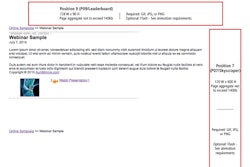A newly published study has found that, compared to physicians who refer to radiologists, physicians with in-office imaging order a higher percentage of bilateral extremity exams under a fee schedule that pays them double the reimbursement of unilateral exams.
While reconfirming earlier research that documented increased imaging volume among self-referring providers, this latest study also shows that self-referral leads to increased "intensity" of imaging use (Radiology, April 2005, Vol. 235:1, pp. 142-147).
Higher intensity reflects a greater expenditure of imaging resources in response to the presenting condition. In an example cited by the authors, a knee MRI would be a higher intensity exam than a bilateral knee x-ray, which in turn would be higher intensity than a unilateral x-ray.
Yet, while doing x-rays of both limbs in a single session would involve only a "marginal" increase in time and costs, the authors noted, the fee-for-service schedule in this case paid twice as much for bilateral exams.
The findings also call into question the contention that increased imaging in self-referred scenarios simply reflects the increased convenience of such imaging for patients.
A New York HMO provided data on claims for services in 2001 for the analysis. The data were used to evaluate image ordering by 1,784 orthopedists, 103 rheumatologists, and 1,425 podiatrists.
Specialists in these categories were the only ones allowed to bill for in-office extremity x-rays, and there was a substantial difference in the ordering habits between the specialty groups.
A total of 101,026 extremity exams were ordered over the one-year period. Of these, 92,979 were self-referred. Overall, 14% of the self-referred exams were bilateral, compared to 10% of the radiologist-referred exams (p < 0.001).
The relative increase in bilateral studies by self-referring podiatrists was 140%, and the increase by self-referring rheumatologists was 97%. The difference between the percentage of self-referred (9%) and radiologist-referred (8%) bilateral exams by orthopedists was statistically significant (p = 0.003) but small.
The researchers also subdivided the specialists on the basis of their referral patterns into three groups: pure self-referrers, pure radiologist-referrers, and mixed-referrers.
The pure self-referrers ordered almost twice as many extremity x-ray exams -- 32 versus 17 -- per 100 patient visits as the radiologist-referrers.
Self-referring orthopedists had a unilateral imaging rate that was 198% greater than that of radiologist-referring orthopedists, and a bilateral imaging rate that was 200% greater, the authors wrote.
Self-referring rheumatologists and podiatrists showed slightly smaller increases in their unilateral imaging rates (186% and 158%, respectively) and larger bilateral rates (325% and 300%).
Overall, the use of bilateral imaging was 40% higher in the self-referred setting than in the radiologist-referred setting, the authors observed.
"Thus, while overall imaging per visit was about twice as high for self-referring physicians as for radiologist-referring physicians, the increase in bilateral imaging was substantially greater," they wrote. "This demonstrates a preference for more intense and, hence, more highly remunerative examinations when studies are performed in the referring physician’s office."
"An alternative or additional explanation would be that nonradiologist physicians lack confidence in reviewing extremity radiographs, and wish to compare the extremity suspected of being unhealthy with the contralateral healthy one," they added.
Interestingly, the twofold greater use of imaging found in this study is smaller than the three- to fourfold increase found in the earlier research. The authors speculated that the difference might be explained by the privileging rules in place during their study period, which only allowed the physicians to perform certain types of radiographic examinations in their offices.
The publication comes at a time when the American College of Radiology (ACR) has been raising the issue of nonradiologist imaging both in the U.S. Congress and with private insurers. ACR chairman Dr. James Borgstede said the new study was helpful in reiterating earlier findings and adding the element of intensity.
"What we're really talking about here is that, not only are self-referrers doing more, but they're doing more costly examinations, and I think that's very important," Borgstede said.
Borgstede also noted the study's potential utility as a foil to the patient convenience argument posited by proponents of in-office imaging. That point was also emphasized by the study's authors.
"Advocates of self-referral often claim the inconvenience of sending a patient to a radiologist discourages necessary imaging. Thus, they claim usage levels seen with in-office self-referral are appropriate, while those seen with referral to a radiologist represent underuse," the authors wrote.
But, they continued, "No such explanation involving patient and physician convenience can rationalize the finding that the percentage of bilateral examinations is higher among self-referred studies than among radiologist-referred studies."
Dr. Andrew W. Litt of the New York University School of Medicine in New York City served as lead author on the study. Co-authors included researchers from CareCore National, an imaging management company, and Jonathan H. Sunshine, Ph.D., director of research for the ACR.
By Tracie L. Thompson
AuntMinnie.com staff writer
April 5, 2005
Related Reading
U.S. Congress hears debate over federal imaging standards, March 17,2005
AuntMinnieTV: Study takes aim at physician self-referral, February 18, 2005
AMA wants end to Medicare moratorium on specialty hospital referrals, December 8, 2004
States, payors seek to stem tide of self-referral abuse, October 29, 2004
Stark II interim final rule leaves huge self-referral loophole, July 20, 2004
Copyright © 2005 AuntMinnie.com


















